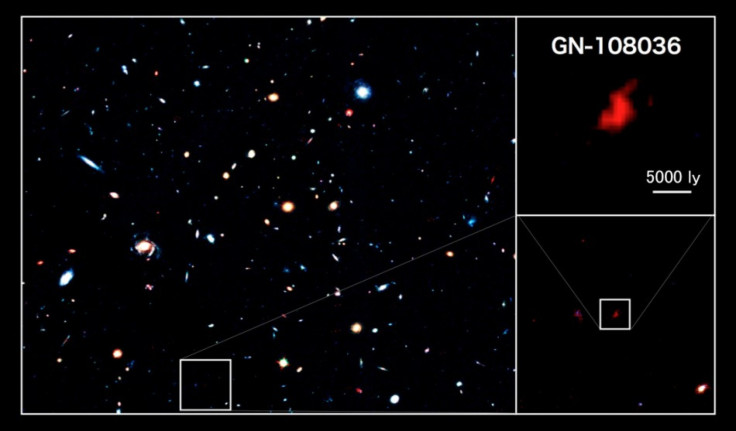Rare Ancient Galaxy Found
750 Million Year Old Galaxy Found

A star-forming juggernaut of a galaxy has been discovered at a distance few other galaxies of any kind have ever been found, researchers led by a University of Tokyo team announced. The galaxy existed around 750 million years after the Big Bang, a time known as the cosmic dawn because it was such an early time in the universe's history.
Astronomers have dubbed the galaxy GN-108036 and it is one of the oldest galaxies ever discovered. There have been nine galaxies found dating between 600 to 800 million years after the Big Bang, but GN-108036 has been found to have a large mass of gas forming stars at a much higher rate than the others.
Examination of the Great Observatories Origins Deep Survey (GOODS) northern field by the Subaru Prime Focus Camera (Suprime-Cam) led to the initial discovery of GN-108036. Astronomers searched for a sign of detection by using recent observations of the GOODS field with the Hubble Space Telescope's newly-installed camera, WFC3. They confirmed the detection of GN-108036 in the WFC3 image; the galaxy's intense ultraviolet brightness showed it contained many young, massive stars.
"The amount of stars born every year was more than ten times higher than those in the other galaxies at a comparable distance,"Yoshiaki Ono at the University of Tokyo, a team member and the leading author of the article said in a statement. "We're surprised to know that such a vigorous galaxy existed at a time when the universe was only five percent of its present age."
Several teams of astronomers have reported discoveries of compact and massive old galaxies around four billion years after the Big Bang. Small, actively star-forming galaxies like GN-108036 might be the ancestors of such galaxies.
"The significant finding about GN-108036 is that it demonstrates the existence of a vigorous star-forming galaxy when the universe was still very cold and dark," lead researcher Masami Ouchi said in a statement.
© Copyright IBTimes 2024. All rights reserved.





















